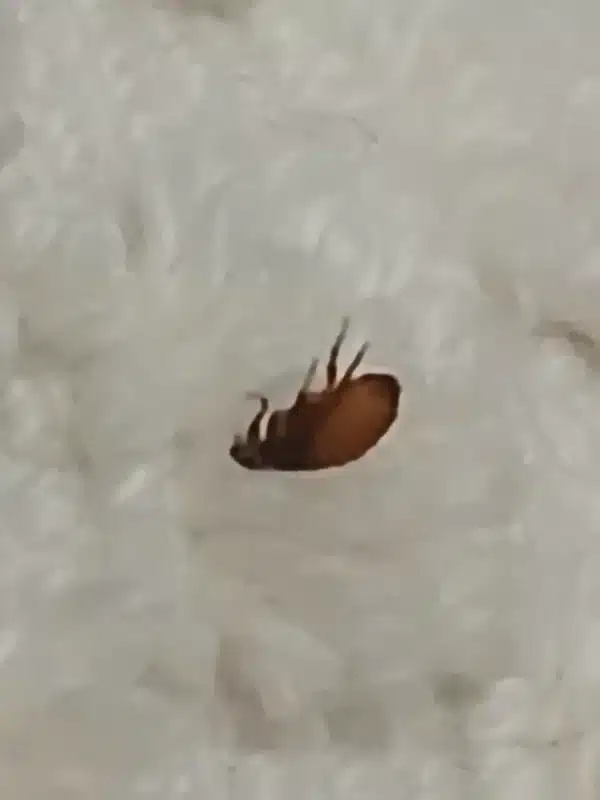Discovering fleas in your carpet can feel overwhelming, especially when you’re watching your pets scratch constantly or finding bites on your family. After 4 years working as a registered technician in our family business that’s been serving the DMV area for over 50 years, I’ve seen countless flea infestations in carpets. The good news is that knowing how to kill fleas in carpet effectively comes down to understanding their biology and choosing the right treatment approach.
Fleas aren’t just living on your pets - they’re breeding in your carpet. About 95% of the flea population actually lives in your environment, not on your animals. The carpet becomes their nursery, with eggs falling off pets and developing through larval and pupal stages in those cozy fibers.
This guide will walk you through both chemical and natural methods to eliminate fleas from your carpet completely. Whether you prefer DIY solutions or need professional intervention, you’ll learn what actually works based on real-world experience treating flea infestations in Virginia, Maryland, and DC homes.
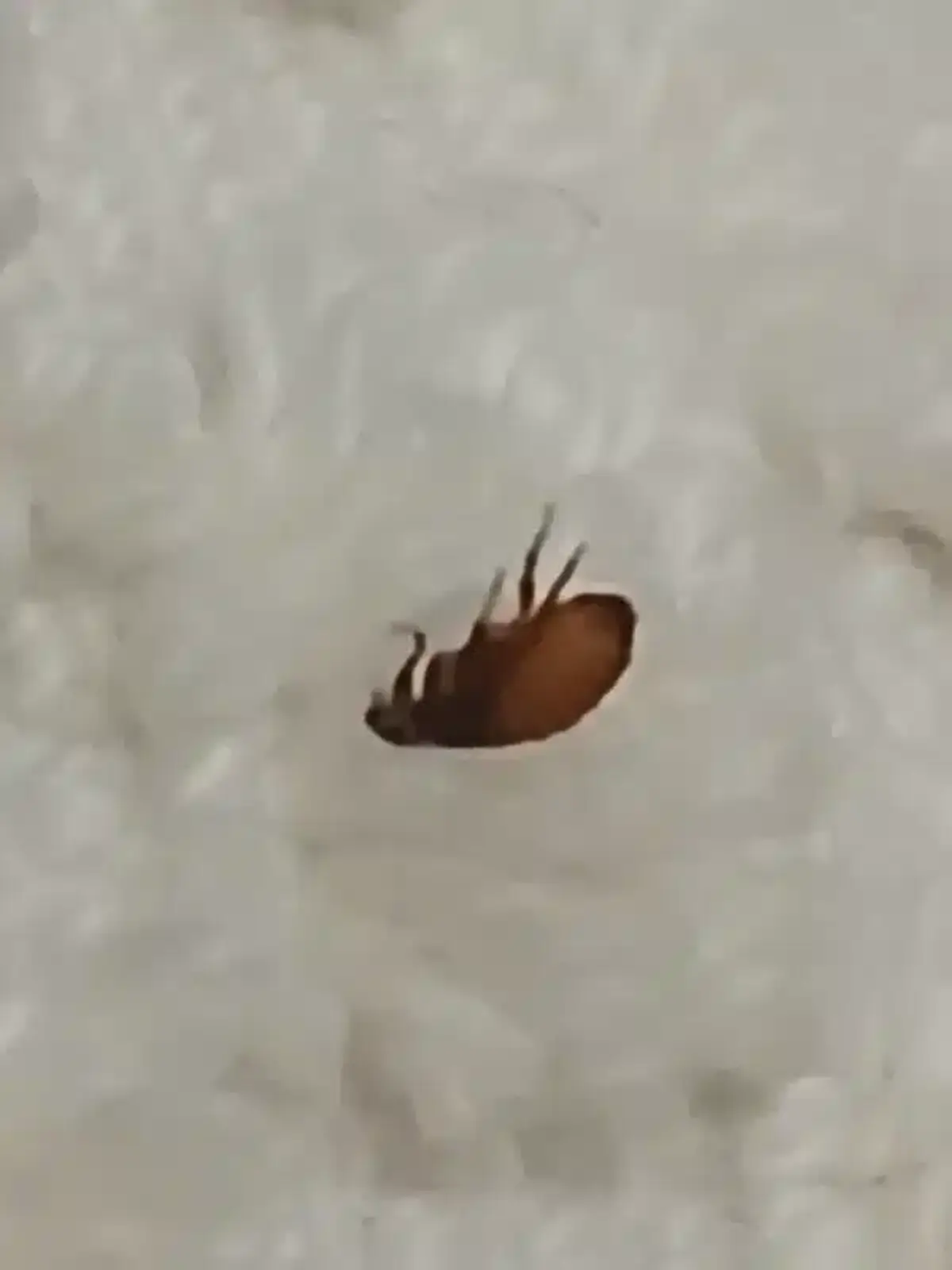
Understanding Flea Biology in Carpets
Before diving into treatment methods, you need to understand what you’re fighting. In our Mid-Atlantic region, the cat flea makes up over 95% of all flea infestations, even in homes with dogs. These persistent pests have a four-stage lifecycle that makes carpet treatment challenging.
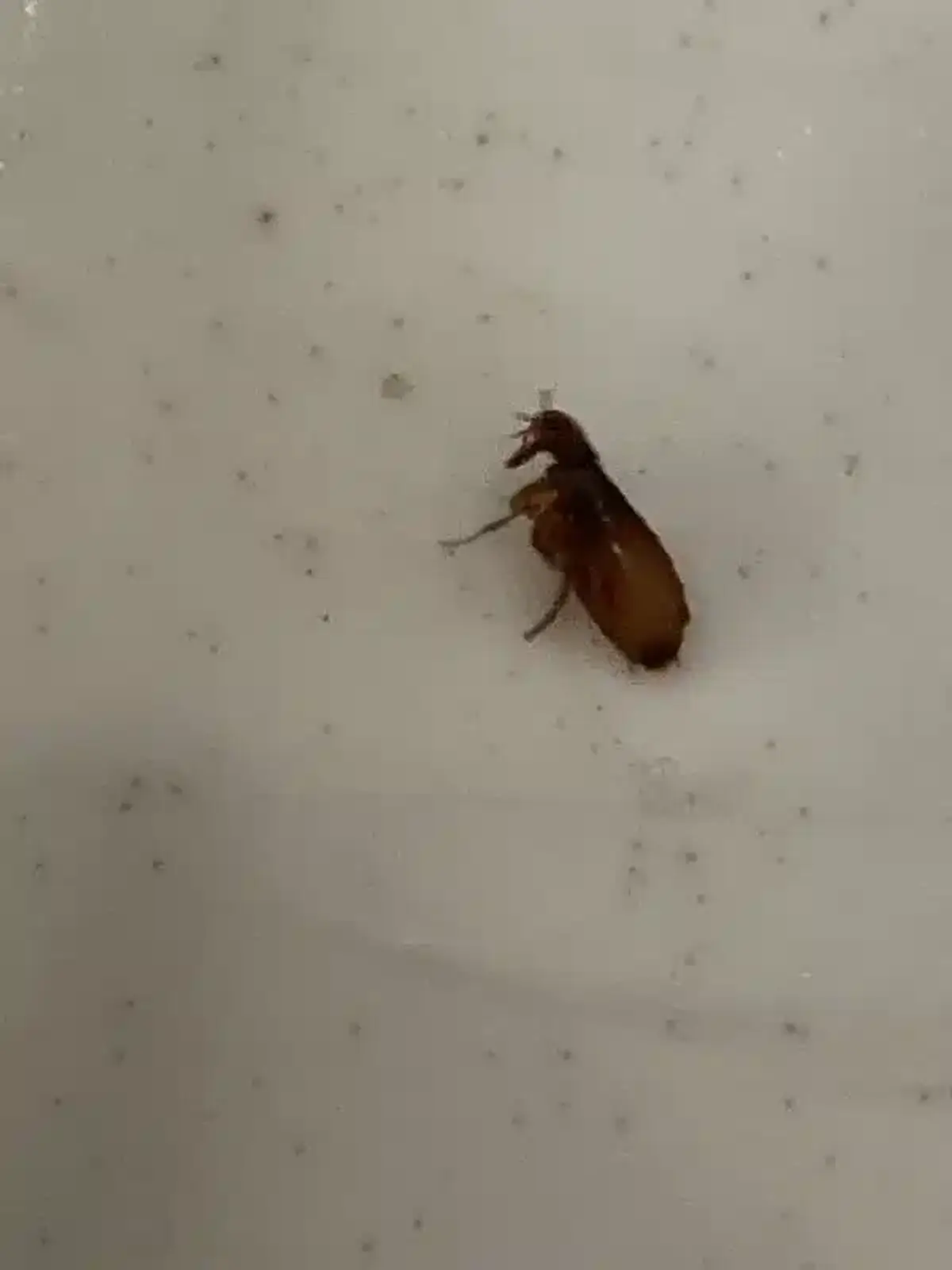
Critical Insight
When you see fleas jumping on your carpet, you’re only seeing the tip of the iceberg! Here’s what’s actually living in your carpet fibers:
- 50% eggs - Fall off pets and settle at the carpet base
- 35% larvae - Feed on dried blood in carpet dust and debris
- 10% pupae - Remain cocooned and resistant to most treatments
- 5% adults - The jumping fleas you actually see
This means when you see adult fleas, there’s a much larger population developing in your carpet fibers. The larvae burrow deep into carpet backing, while pupae can remain dormant for weeks or months, emerging long after you think the problem is solved.
Temperature and humidity play crucial roles too. Fleas develop fastest in conditions between 70-85°F with 50-90% humidity - basically, the comfort zone of most homes. This is why any treatment plan needs to work for at least 21-30 days to catch emerging generations.
Mechanical Flea Control Methods: Your First Line of Defense
Before reaching for any chemical or natural treatments, mechanical removal should be your starting point. These methods can dramatically reduce flea populations and make other treatments more effective.
Strategic Vacuuming Techniques for Flea Control
Vacuuming isn’t just about removing adult fleas - it’s about disrupting the entire lifecycle. The vibrations also force pupae to emerge from their protective cocoons.
What does the science say?
Research from Ohio State University shows that vacuuming kills 96% of adult fleas and 100% of immatures mechanically. The mechanical action combined with the sudden pressure changes in the vacuum system is lethal to fleas at all life stages except sealed pupae.
For maximum effectiveness when learning how to kill fleas in carpet, vacuum daily for 10-14 days. Focus on these high-priority areas:
- Pet sleeping and resting areas
- Edges of rooms and baseboards
- Under furniture and cushions
- High-traffic carpeted areas
- Closets and storage areas
Always discard the vacuum bag immediately after use or empty bagless containers into sealed plastic bags. Fleas can survive inside vacuum cleaners and re-emerge if given the chance.
Steam Cleaning for Deep Flea Carpet Penetration
Steam cleaning reaches temperatures that instantly kill all flea life stages. Steam at 120°F or higher delivers immediate results. The heat penetrates deep into carpet fibers and backing where chemicals might not reach.
What does the science say?
Studies show 95% population reduction after a single 200°F steam treatment pass. The lethal temperature threshold begins at 95°F for sustained exposure, but rapid knockdown occurs at temperatures above 120°F across all flea life stages.
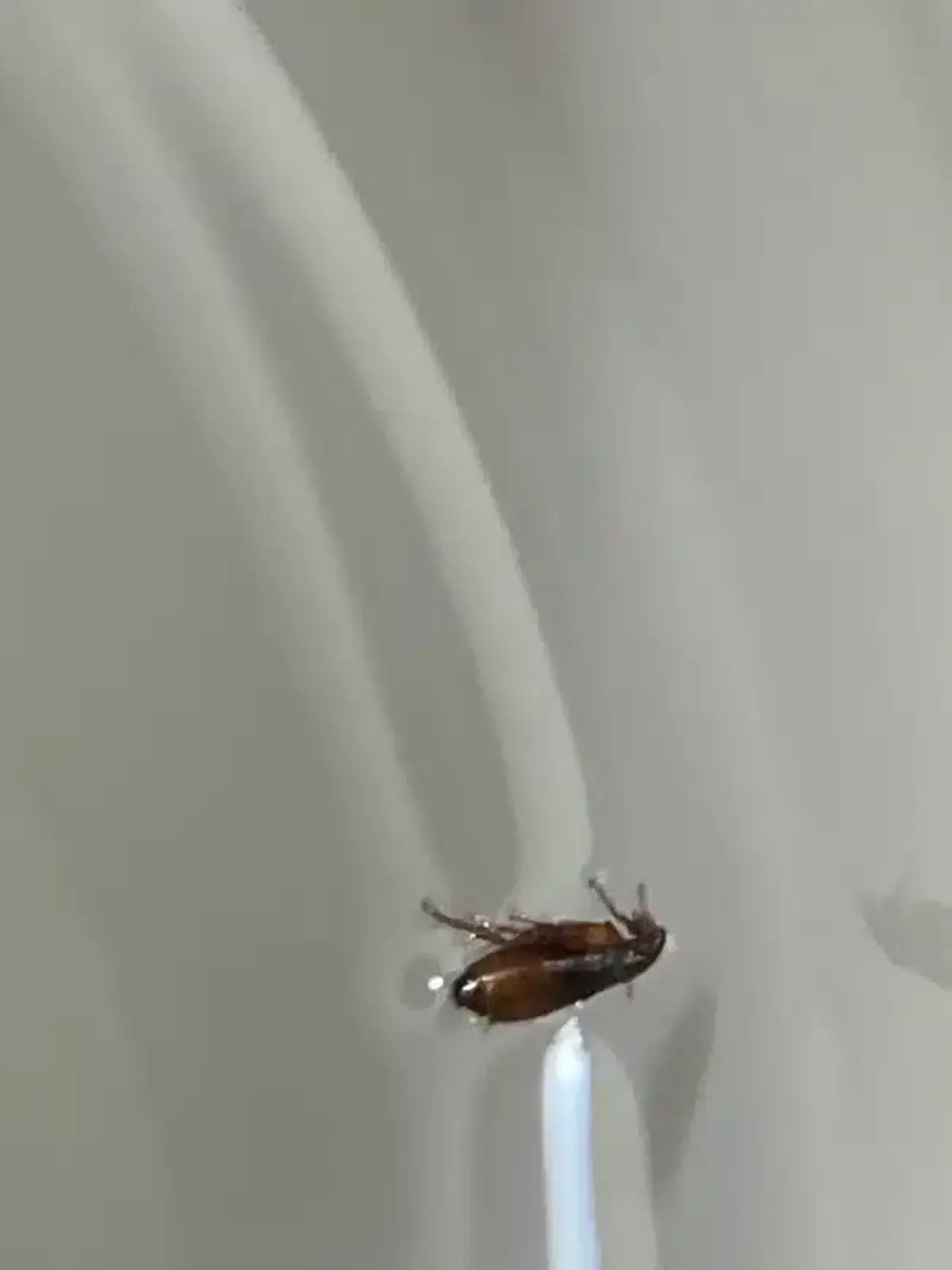
Steam cleaning works best when combined with other methods. The heat kills existing fleas while opening up carpet fibers for better chemical penetration if you choose to follow up with sprays or powders.
Natural Solutions to Kill Fleas in Carpet
Many homeowners prefer starting with natural methods, especially in homes with children and pets. While these approaches generally take longer and require more frequent application, they can be effective when used consistently.
Diatomaceous Earth Application for Carpet Flea Control
Food-grade diatomaceous earth works by desiccating flea cuticles, essentially drying them out. It’s most effective against adult fleas in dry areas but has limited impact on eggs and pupae. The key is using food-grade DE only - never use pool-grade diatomaceous earth indoors.
To apply DE effectively:
- Sprinkle a light layer across affected carpet areas
- Work it into fibers with a broom or brush
- Let it sit for 24-48 hours
- Vacuum thoroughly
Keep in mind that diatomaceous earth can irritate lungs and eyes, so wear a dust mask during application. Its effectiveness also drops significantly in humid conditions, which is common in our Mid-Atlantic climate.
Boric Acid and Borax Flea Treatments
Boric acid acts as both an abrasive and metabolic poison against fleas. It’s moderately effective in dry, undisturbed carpet areas. However, it can be toxic if pets ingest large amounts, so apply it carefully and vacuum it up within 24-48 hours.
Work the powder deep into carpet fibers, especially along baseboards and under furniture where pets spend time. The key is keeping it below the carpet nap where pets won’t easily access it.
Essential Oil Approaches for Getting Rid of Fleas
Botanical oils like limonene, linalool, cedar, and eugenol provide quick adult flea knockdown. However, they evaporate within 24 hours, requiring frequent reapplication. These work best as part of an integrated approach rather than standalone solutions.
Popular essential oil blends include:
- Peppermint and rosemary oil spray
- Cedar oil carpet treatments
- Citrus-based flea sprays
While essential oils smell pleasant and provide immediate satisfaction when you see fleas jumping away, they require consistent reapplication every day or two to maintain effectiveness.
Chemical Flea Control Solutions: Faster, Longer-Lasting Results
Chemical treatments offer faster, more reliable results when you need to know how to kill fleas in carpet quickly. Modern flea control products are much more targeted and effective than older formulations.
Adulticide Options for Flea Infestations
Adulticides kill adult fleas on contact but have varying residual effects:
Pyrethroids (permethrin, cyfluthrin, deltamethrin) provide fast knockdown but only last 2-4 weeks in carpet. Some flea populations have developed resistance, making them less reliable as standalone treatments.
Pyrethrins with PBO work similarly but have even shorter residual time - just hours to a few days. They’re useful for “flush-out” treatments before vacuuming but need combination with longer-lasting products.
Insect Growth Regulators (IGRs) for Flea Control
IGRs are the game-changers in modern flea control. Products containing methoprene, pyriproxyfen, or fenoxycarb mimic insect hormones to disrupt flea development cycles.
What does the science say?
Scientific studies demonstrate that IGRs can sterilize eggs and prevent larval development for 4-7 months in carpet dust. These products work by mimicking juvenile hormone, preventing immature fleas from molting to the next life stage, effectively breaking the reproductive cycle.
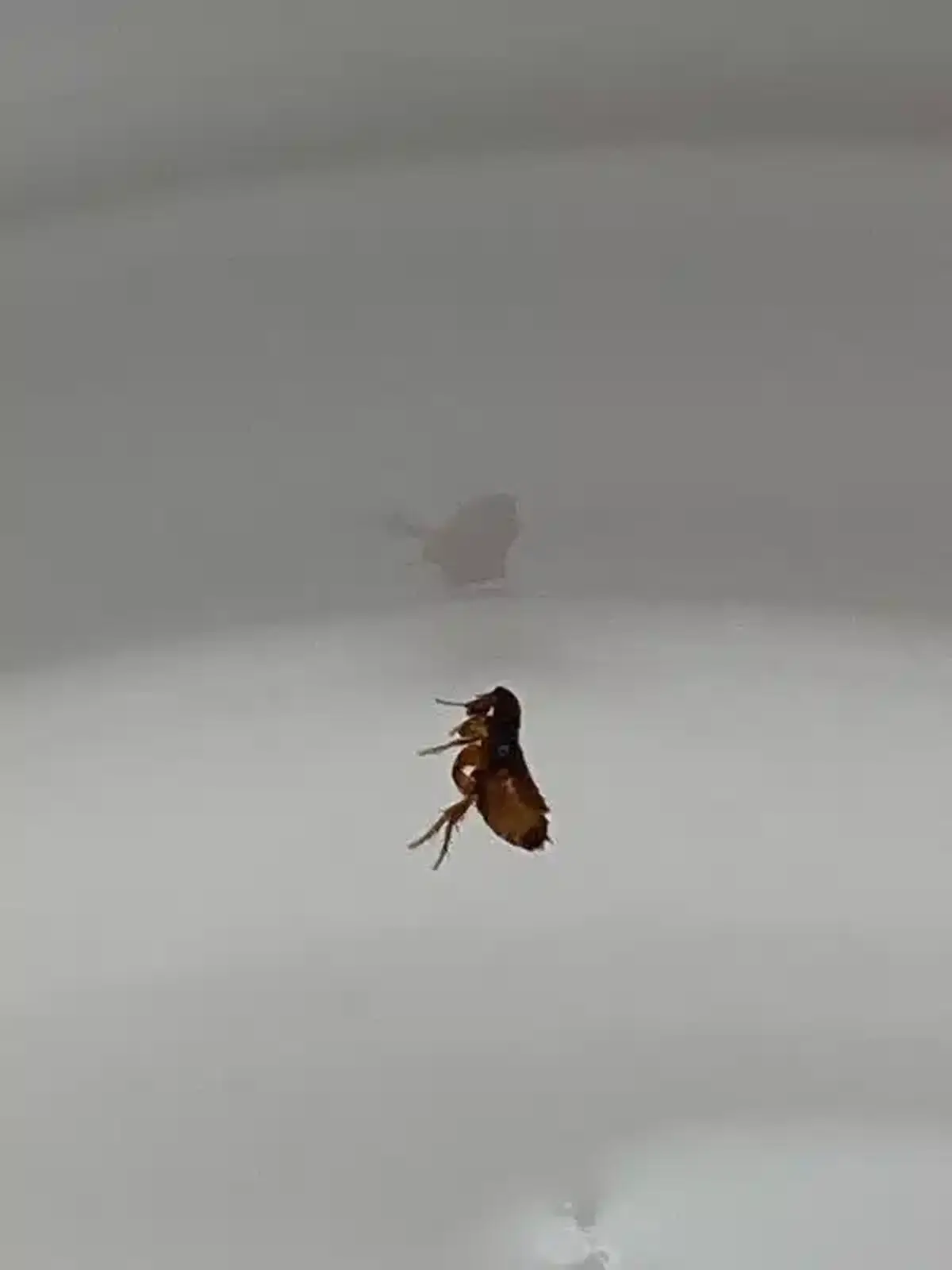
IGRs work best when combined with adulticides. The adulticide kills existing adults while the IGR prevents new generations from developing. This combination breaks the flea lifecycle completely.
Carpet Flea Treatment Application Methods
Carpet sprays allow liquid to wick down to backing where flea larvae develop. Look for products combining both adulticide and IGR components for complete coverage.
Carpet powders sit among fibers and work well for thick pile carpets and areas under furniture. They must be brushed in and left for at least 24 hours before vacuuming. Without IGR components, they require frequent reapplication every 1-3 weeks.
Total-release foggers treat air space but deliver poor doses to carpet backing unless they contain IGR. Use them as supplemental treatments, not primary carpet applications.
Micro-encapsulated liquids provide 30-90 day release and are preferred by professional technicians for residential treatments.
Professional Flea Extermination Process
Sometimes DIY methods aren’t enough, especially for severe infestations or when you need guaranteed results quickly. Professional treatment follows a systematic approach that addresses all flea life stages simultaneously.
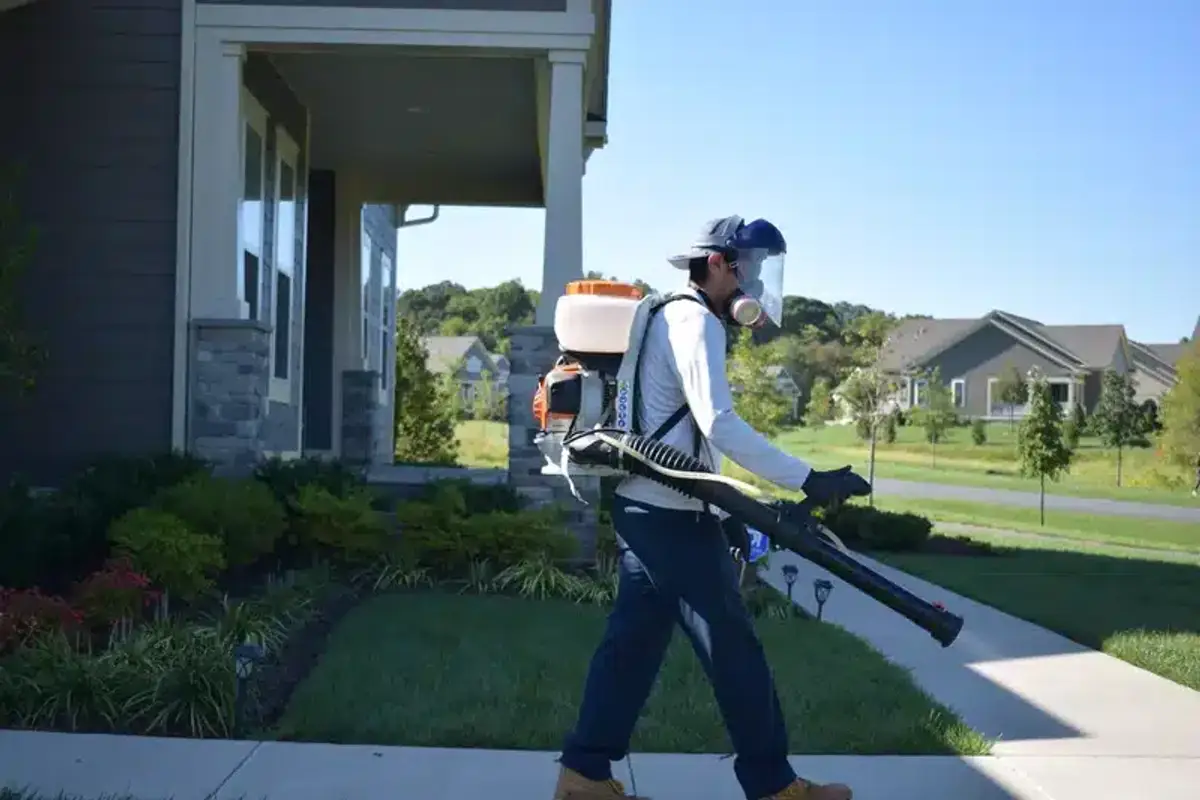
Our professional approach typically involves a two-visit program:
First visit includes detailed inspection, preparation checklist review with homeowners, and application of micro-encapsulated adulticides plus long-acting IGRs. We focus on carpet edges, under furniture, and anywhere pets spend time.
Second visit occurs 14 days later for inspection and spot retreatment if needed. This timing catches any pupae that emerged after the initial treatment.
Professional treatment often includes perimeter outdoor applications to prevent pets from picking up new fleas. We also treat crawl spaces, basement areas, and other locations where fleas might develop away from carpeted living areas.
The key advantage of professional treatment is access to products with longer residual times and the expertise to apply them correctly. We also provide detailed preparation instructions and follow-up monitoring to ensure complete elimination.
Integrated Flea Treatment Protocol
The most effective approach to kill fleas in carpet combines multiple methods in a strategic sequence. This integrated approach addresses all life stages and prevents reinfestations.
Step-by-Step Flea Treatment Plan
Preparation phase: Remove clutter, wash all pet bedding in hot water (140°F for 10 minutes), and vacuum thoroughly. Steam clean if equipment is available.
Chemical application: Apply combination adulticide and IGR spray to all carpeted areas, paying special attention to edges, under furniture, and closets. Use carpet powder for deep-pile areas that are hard to reach with liquids.
Post-treatment care: Open windows until spray dries completely, then vacuum again to stimulate pupal emergence. The vibrations actually help by forcing emerging fleas to contact treated surfaces.
Follow-up phase: Continue vacuuming every 1-2 days for two weeks. Expect to see new adult fleas around days 7-14 as pupae emerge - this is normal and means the treatment is working.
Monitoring: Place dish-soap light traps overnight weekly until you get zero captures for two consecutive weeks. This confirms complete elimination.
Essential Flea Treatment Success Steps
- Timing is Everything: Treat carpets and pets simultaneously to break the reinfection cycle
- Vacuum Strategy: Continue daily vacuuming for 2 weeks after treatment - the vibrations stimulate pupae to emerge
- Temperature Control: Keep humidity below 50% when possible to desiccate developing larvae
- Professional Insight: Don’t panic if you see fleas 7-14 days after treatment - this means the treatment is working
Flea Elimination Timeline Expectations
Complete flea elimination typically takes 4-6 weeks with proper treatment. You’ll see the biggest reduction in adult fleas within the first week, but emerging pupae will continue appearing for 2-3 weeks as the lifecycle completes.
Don’t panic if you see fleas after treatment - it’s actually a good sign that pupae are emerging and contacting the treated surfaces. Stick to your vacuuming schedule and avoid retreating too quickly unless you’re seeing sustained high numbers after week 3.
Ensuring Complete Flea Elimination and Prevention
Successfully killing fleas in carpet is only half the battle. Preventing reinfestation requires addressing the source and maintaining protective measures.
Keep pets on veterinarian-approved flea preventives year-round. Our Mid-Atlantic climate allows fleas to survive indoors through winter, making seasonal treatment gaps risky. Products like topical spot-ons or oral preventives stop the cycle before eggs reach your carpet.
Environmental controls help long-term success. Maintain indoor humidity below 50% when practical, as flea larvae desiccate quickly in dry conditions. Store seasonal rugs and fabrics in sealed plastic after hot washing.
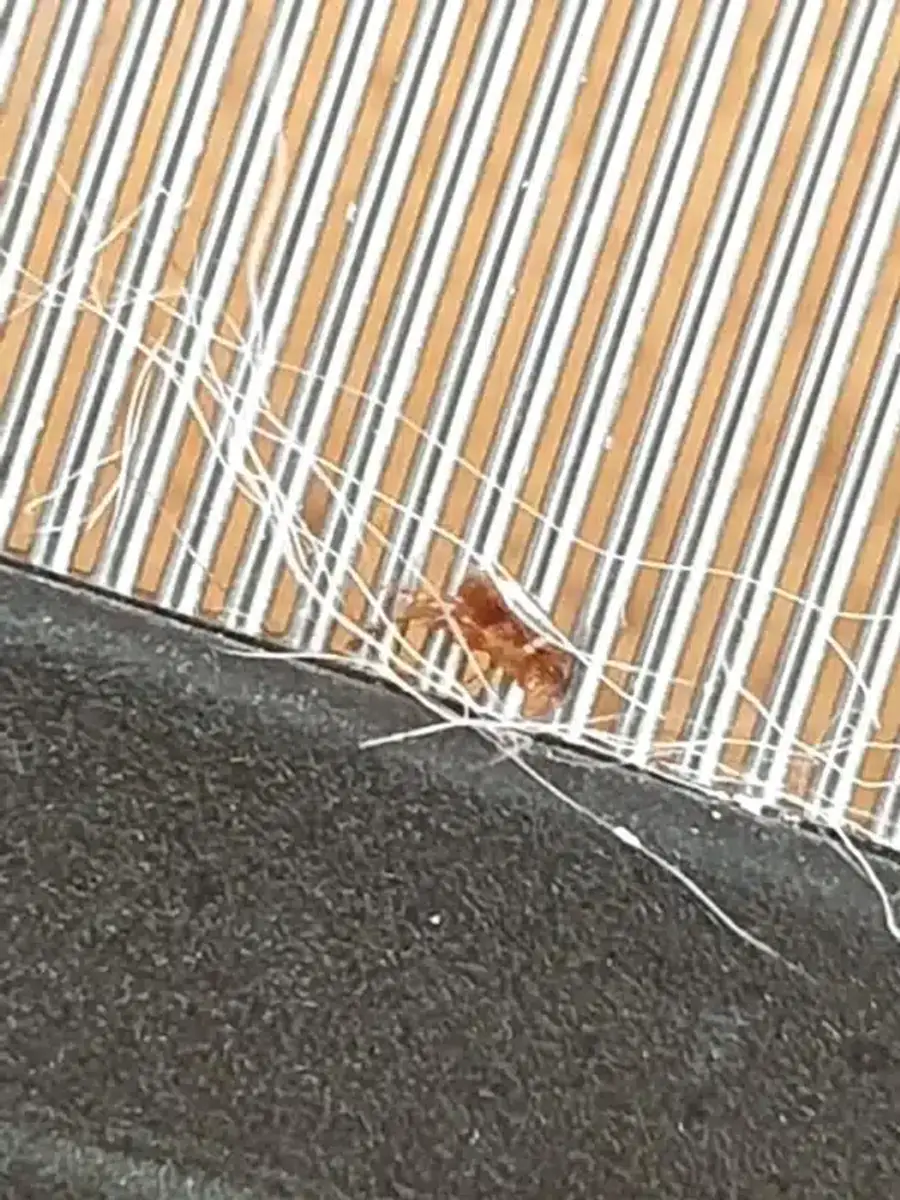

Long-Term Flea Prevention Strategy
- Pet Preventives: Keep pets on year-round flea prevention - our Mid-Atlantic climate allows fleas to survive indoors through winter
- Weekly Maintenance: Vacuum pet areas weekly even when no fleas are visible to remove potential food sources
- Humidity Control: Maintain indoor humidity below 50% when practical - flea larvae desiccate quickly in dry conditions
- New Item Inspection: Carefully inspect used furniture, rugs, and fabric items before bringing them indoors
When bringing in used furniture, rugs, or other fabric items, inspect them carefully for signs of flea activity. Consider professional treatment if you suspect contamination, especially with valuable antiques or large pieces difficult to treat yourself.
Flea Treatment Cost Considerations and Professional Options
Understanding treatment costs helps you make informed decisions about DIY versus professional approaches. Here’s how the three main treatment approaches compare:
| Aspect | Natural Methods | Chemical DIY | Professional |
|---|---|---|---|
| Cost Range | $20-50 | $50-150 | $200-500 |
| Speed of Results | 6-8 weeks | 4-6 weeks | 2-4 weeks |
| Application Frequency | Every 1-3 days | Single application | 1-2 visits |
| Best For | Light infestations | Moderate infestations | Severe infestations |
Professional flea treatment costs range from $200-500 for initial service, with follow-up visits often included. The investment often pays off through faster results and reduced chance of retreatment.
Consider professional treatment when:
- DIY efforts haven’t worked after 6-8 weeks
- You have extensive carpeted areas
- Multiple pets are affected
- Family members are experiencing allergic reactions
- You need guaranteed results quickly
Professional services often include warranty periods and follow-up treatments if fleas reappear within the guarantee window.
Remember that flea control requires both premise treatment and pet treatment. Budget for both components when calculating total costs, as treating only the carpet without addressing pets will lead to rapid reinfestation.
Flea Control Integration with Overall Pest Management
Flea problems often occur alongside other pest issues. Understanding these connections helps you develop comprehensive treatment strategies.
Carpet beetle larvae and other fabric pests sometimes get misidentified as flea larvae. Proper identification is crucial because treatment approaches differ significantly.
Additionally, recognizing signs of other carpet-dwelling pests helps you address multiple problems simultaneously rather than treating each separately.
If you’re dealing with multiple pest issues, consider integrated pest management approaches that address your home’s overall vulnerability rather than focusing on single pest types.
Getting Rid of Fleas in Carpet: Conclusion and Next Steps
Learning how to kill fleas in carpet effectively requires understanding their biology, choosing appropriate treatment methods, and maintaining consistency throughout the process. Whether you opt for natural solutions, chemical treatments, or professional intervention, success depends on treating all life stages and preventing reinfestation.
Start with mechanical removal through vacuuming and steam cleaning, then choose chemical or natural treatments based on your comfort level and timeline needs. Remember that complete elimination takes 4-6 weeks regardless of the method chosen.
Most importantly, coordinate carpet treatment with pet preventive care. Treating the environment without addressing pets creates an endless cycle of reinfestation.
If you’re struggling with persistent flea problems or want professional consultation on the best approach for your specific situation, our experienced team can provide customized treatment plans. Call us at 703-683-2000 or email info@bettertermite.com for expert advice on eliminating fleas from your carpets quickly and effectively.
Frequently Asked Questions About Carpet Flea Control
How long does it take to kill fleas in carpet completely?
+
Complete flea elimination typically takes 4-6 weeks with proper treatment. You'll see significant reduction within the first week, but emerging pupae continue appearing for 2-3 weeks as the lifecycle completes. Consistent vacuuming and treatment application are essential throughout this period.
Can vacuuming alone kill fleas in carpet?
+
Vacuuming kills 96% of adult fleas and 100% of immatures mechanically, but it's not sufficient alone for complete elimination. While highly effective, vacuuming should be combined with other treatments to address eggs and pupae that may be deeply embedded in carpet backing.
What temperature kills fleas in carpet fibers?
+
Steam at 120°F or higher instantly kills all flea life stages. Sustained heat above 95°F kills fleas over time, while temperatures below 46°F are also lethal. Steam cleaning at 200°F provides 95% population reduction in a single treatment.
Do natural methods work as well as chemicals for carpet fleas?
+
Natural methods like diatomaceous earth and essential oils can be effective but generally work slower and require more frequent application than chemical treatments. They work best when combined with mechanical removal and consistent reapplication every 1-3 days.
Why do I still see fleas after treating my carpet?
+
Seeing fleas 7-14 days after treatment is normal and indicates pupae are emerging from their cocoons. These fleas contact treated surfaces and die quickly. Continue your treatment plan for the full 4-6 weeks rather than retreating immediately.
How deep into carpet do fleas live?
+
Flea larvae burrow deep into carpet backing where they feed on organic debris. Eggs settle at the carpet base after falling off pets. This is why treatments need to penetrate beyond surface fibers to reach developing stages.
Should I treat my pets and carpet at the same time?
+
Yes, treating both simultaneously is essential for success. Treating only the carpet while pets remain untreated leads to rapid reinfestation. Use veterinarian-approved preventives on pets while treating the carpet environment.
What's the difference between flea sprays and powders for carpet?
+
Carpet sprays penetrate deeper and wick to backing where larvae develop, while powders sit among fibers and work well for thick pile areas. Sprays typically provide longer residual control, especially when they contain insect growth regulators.
Can fleas survive in carpet without pets in the house?
+
Adult fleas can survive 2-3 months in carpet without a blood meal, while pupae can remain dormant much longer. However, without pets to feed on and lay eggs, the population will eventually die out over several months.
When should I call a professional for carpet flea treatment?
+
Consider professional treatment if DIY methods haven't worked after 6-8 weeks, you have extensive carpeted areas, multiple pets are affected, or you need guaranteed results quickly. Professionals have access to longer-lasting products and application expertise.
With five years of hands-on experience in the pest control industry, George Schulz is a registered technician with the Virginia Pest Management Association and a proud third-generation professional in a family business that's been protecting homes for over 57 years. He manages and trains a team of service pros while also leading internal research efforts—recently spearheading a deep-dive review of thousands of documents on pest control materials to hand-pick the most kid and pet friendly, most effective solutions tailored specifically for homes in the DC metro area.
